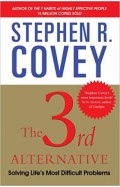- Home
- Market Neutral Investing - Build Consistent Low-Risk Profits by Creating Your Own Hedged Portfolio
Market Neutral Investing - Build Consistent Low-Risk Profits by Creating Your Own Hedged Portfolio
By: Eric Stokes
-
Rs 845.75
- Rs 995.00
- 15%
You save Rs 149.25.
Due to constant currency fluctuation, prices are subject to change with or without notice.
In addition to tips that cover beginning to intermediate investing topics, Stokes also presents the strategies behind market neutral investing in practical, easy-to-understand terms. Stocks go up and down, but investors shouldn't have to limit themselves to only one-half of the equation. Enter market neutral investing, where investors can take advantage of movement in both directions: long and short investing. Market Neutral Investing teaches investors:
* How to implement this proven strategy, used since the 1940's by the most elite money managers.
* What the three different types of portfolio risks are: company, sector, and market, and how to manage them.
* How to sell a stock short and make money when a stock price declines.
* What ""hedge funds"" are, how they operate, and what makes them attractive.
* What the five simple measures of stock valuation are and how to use them.
In addition to tips that cover beginning to intermediate investing topics, Stokes also presents the strategies behind market neutral investing in practical, easy-to-understand terms. Stocks go up and down, but investors shouldn't have to limit themselves to only one-half of the equation. Enter market neutral investing, where investors can take advantage of movement in both directions: long and short investing. Market Neutral Investing teaches investors:
* How to implement this proven strategy, used since the 1940's by the most elite money managers.
* What the three different types of portfolio risks are: company, sector, and market, and how to manage them.
* How to sell a stock short and make money when a stock price declines.
* What ""hedge funds"" are, how they operate, and what makes them attractive.
* What the five simple measures of stock valuation are and how to use them.
Market Neutral Investing - Build Consistent Low-Risk Profits by Creating Your Own Hedged Portfolio
By: Eric Stokes
Rs 845.75 Rs 995.00 Ex Tax :Rs 845.75
Zubin Mehta: A Musical Journey (An Authorized Biography)
By: VOID - Bakhtiar K. Dadabhoy
Rs 892.50 Rs 1,050.00 Ex Tax :Rs 892.50
The Black Swan The Impact Of The Highly Improbable
By: Nassim Nicholas Taleb
Rs 2,965.50 Rs 3,295.00 Ex Tax :Rs 2,965.50
Inside Apple How Americas Mo Admired And Secretive Company Really Works
By: Adam Lashinsky
Rs 1,147.50 Rs 1,350.00 Ex Tax :Rs 1,147.50
Buyology How Everything We Believe About Why We Buy Is Wrong
By: Martin Lindstrom
Rs 2,695.50 Rs 2,995.00 Ex Tax :Rs 2,695.50
The 3rd Alternative Solving Life s Most Difficult Problems
By: Stephen Covey
Rs 675.75 Rs 795.00 Ex Tax :Rs 675.75
Building Social Business The New Kind Of Capitalism That Serves Humanitys Most Pressing Needs
By: Muhammad Yunus
Rs 400.00 Ex Tax :Rs 400.00
No similar books from this author available at the moment.
No recently viewed books available at the moment.
Zubin Mehta: A Musical Journey (An Authorized Biography)
By: VOID - Bakhtiar K. Dadabhoy
Rs 892.50 Rs 1,050.00 Ex Tax :Rs 892.50
Market Neutral Investing - Build Consistent Low-Risk Profits by Creating Your Own Hedged Portfolio
By: Eric Stokes
Rs 845.75 Rs 995.00 Ex Tax :Rs 845.75














-120x187.jpg?q6)













